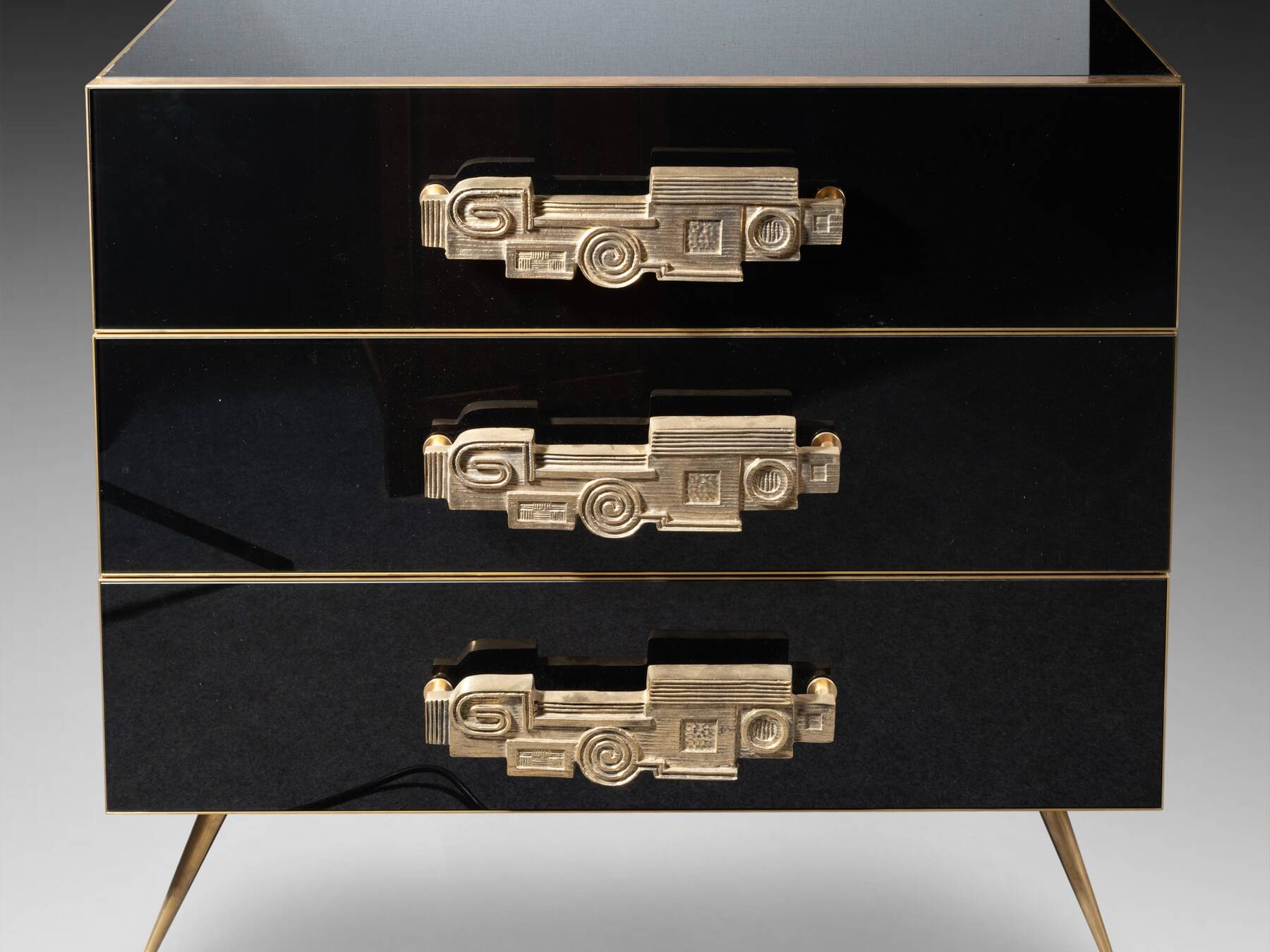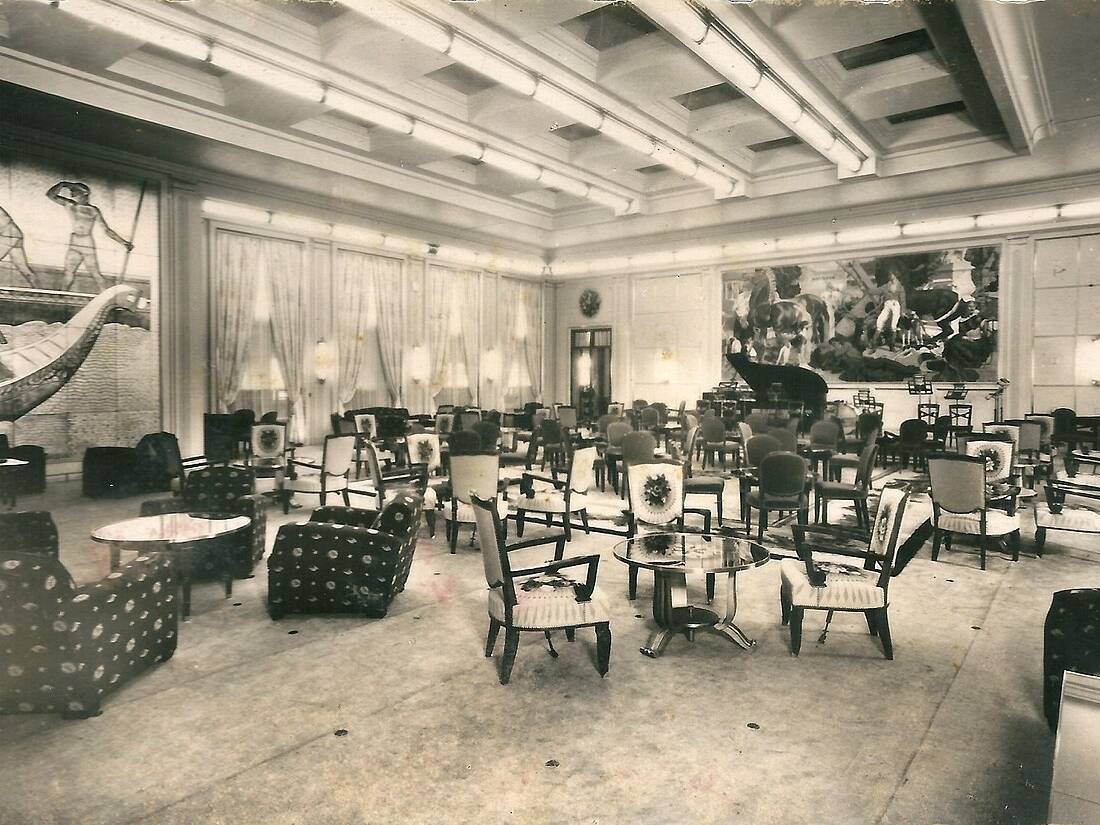In the middle of the 18th century, a minority of painters – including Oudry and Natoire – still stubbornly grinded malachite to obtain green rather than mixing blue and yellow. At the dawn of the 19th century, however, whole new perspectives await this stone. In 1758, the Russian metallurgical magnate Alexei Turchaninov acquired the Gumyoshevsky mine, where he began extracting the green mineral, which has long been exploited for its wealth of copper. Quickly, the entrepreneur manages to value this stone to the point of exploding its demand. From the 1770s to the 1810s, Turchaninov was the main supplier of malachite to Russia and Europe for the creation of small decorative objects. For the moment, the lapidaries have come up against the softness of this stone, resigning themselves to using it in small veneers associated with other materials. Malachite frames or serves as a background, it underlines and enhances, like the bronze with which we begin to associate it; the result is indeed very nice.
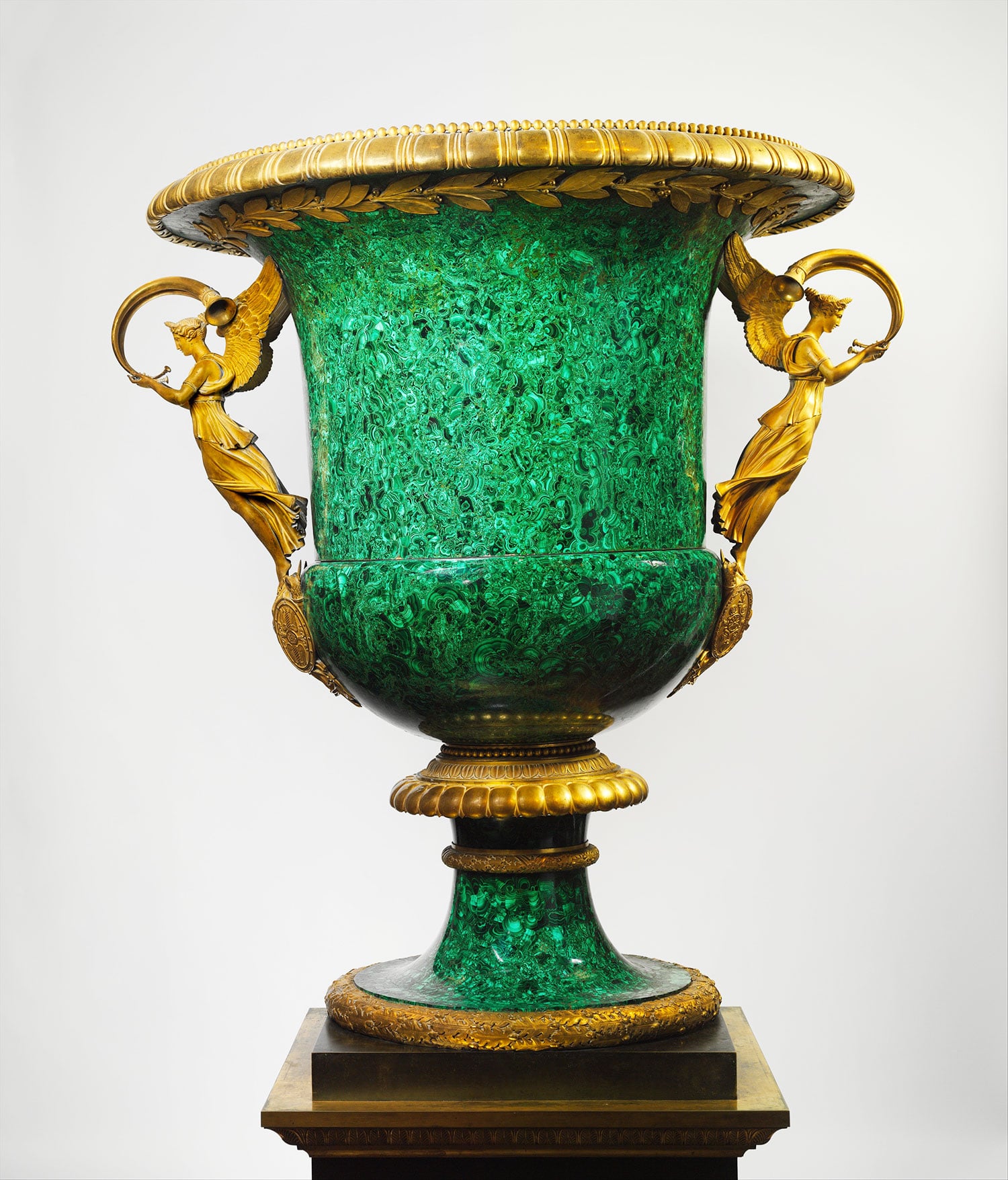
Nicolas Demidov (1773 – 1828), whose family owns lapidary workshops and operates the mines of Nijni Taguil or Yekaterinburg, in 1819 ordered the bronzier Thomire (1751 – 1843) to mount a monumental vase in malachite, today kept at the MET Museum. A few large objects have already been produced, but it is then a remarkable feat. In 1808, some of these expensive and rare creations were offered to Napoleon I and still decorate the Salon des Malachites at the Grand Trianon today.

It took many attempts to work with malachite as we usually do with other hard stones. The Florentine lapidary technique was used in particular through the Roman mosaicist Francesco Belloni in Paris and his colleague Luigi Moglia called to Saint-Petersburg by Tsar Nicolas I (1796 – 1855). Soon the Russian manner distinguished itself from the Florentine. While the pietre dure set out to create an artistic motif, the Russian way intended to reproduce the monolithic surface of the stone. It even took the exercise to tackle flat surfaces as well as rounded or raised surfaces.
Russian Lapidary Marquetry
Appeared in the 1780s, the Russian style therefore gives up shaping malachite in its mass and employs, for both small and large decorative art objects, a core of metal or, more rarely, limestone from Putilov. Thin strips of malachite 2 to 4 millimeters thick are glued to the object and the gaps filled with malachite powder mixed with mastic. Everything is polished so as to remove unsightly junctions. Like marquetry, the possibilities of arranging natural stone designs allow for a small range of patterns among which the “crumpled velvet” assembly gives the illusion of a moiré fabric.
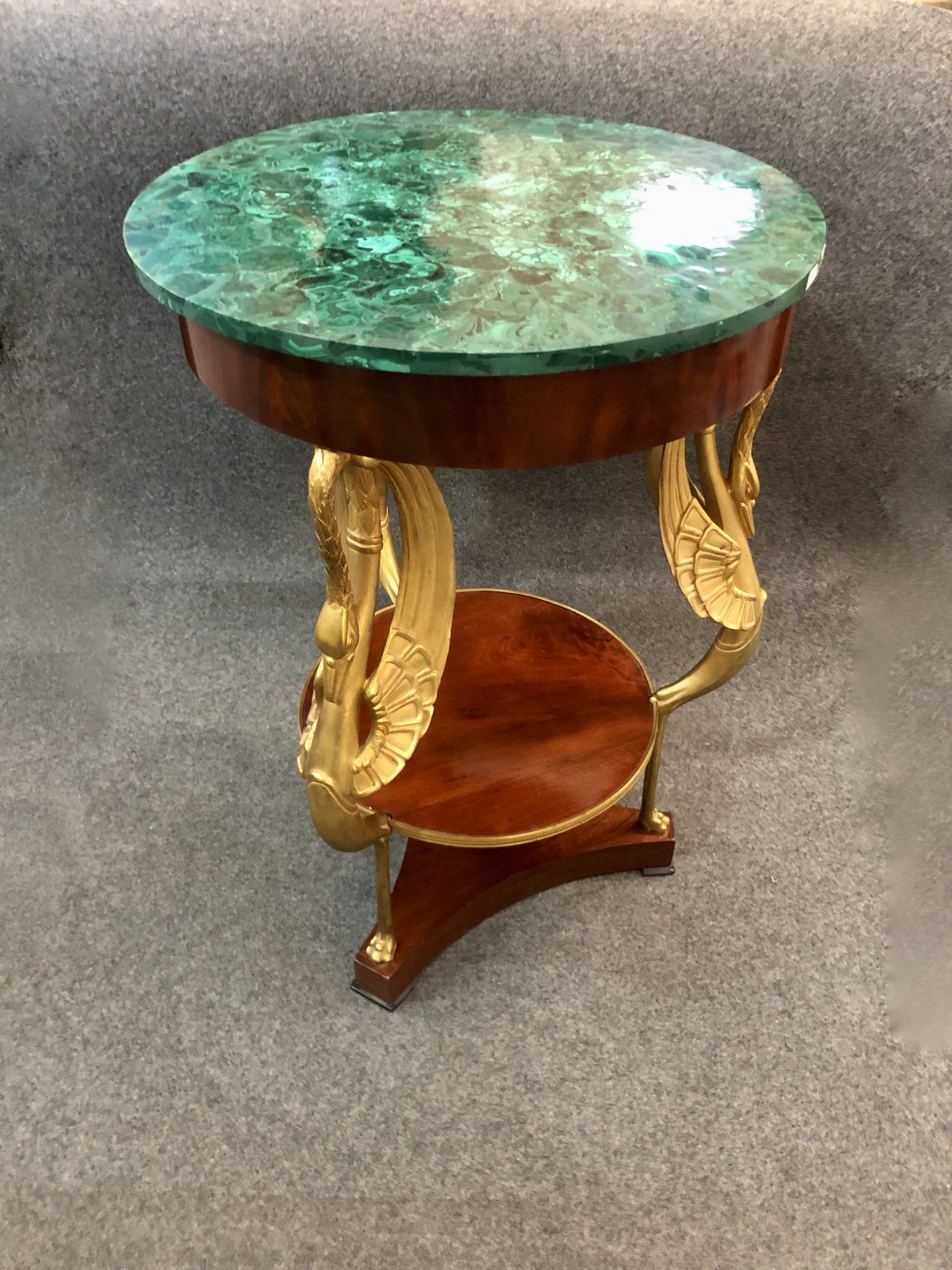
The ringed or striated assembly employs parallel bands while the radial produces beautiful ocelli. By selecting slats with repeating patterns and ordering them symmetrically around one or more crossed planes, we obtain a so-called “two-sided” or “4-sided” pattern similar to a pattern reflected in a mirror.
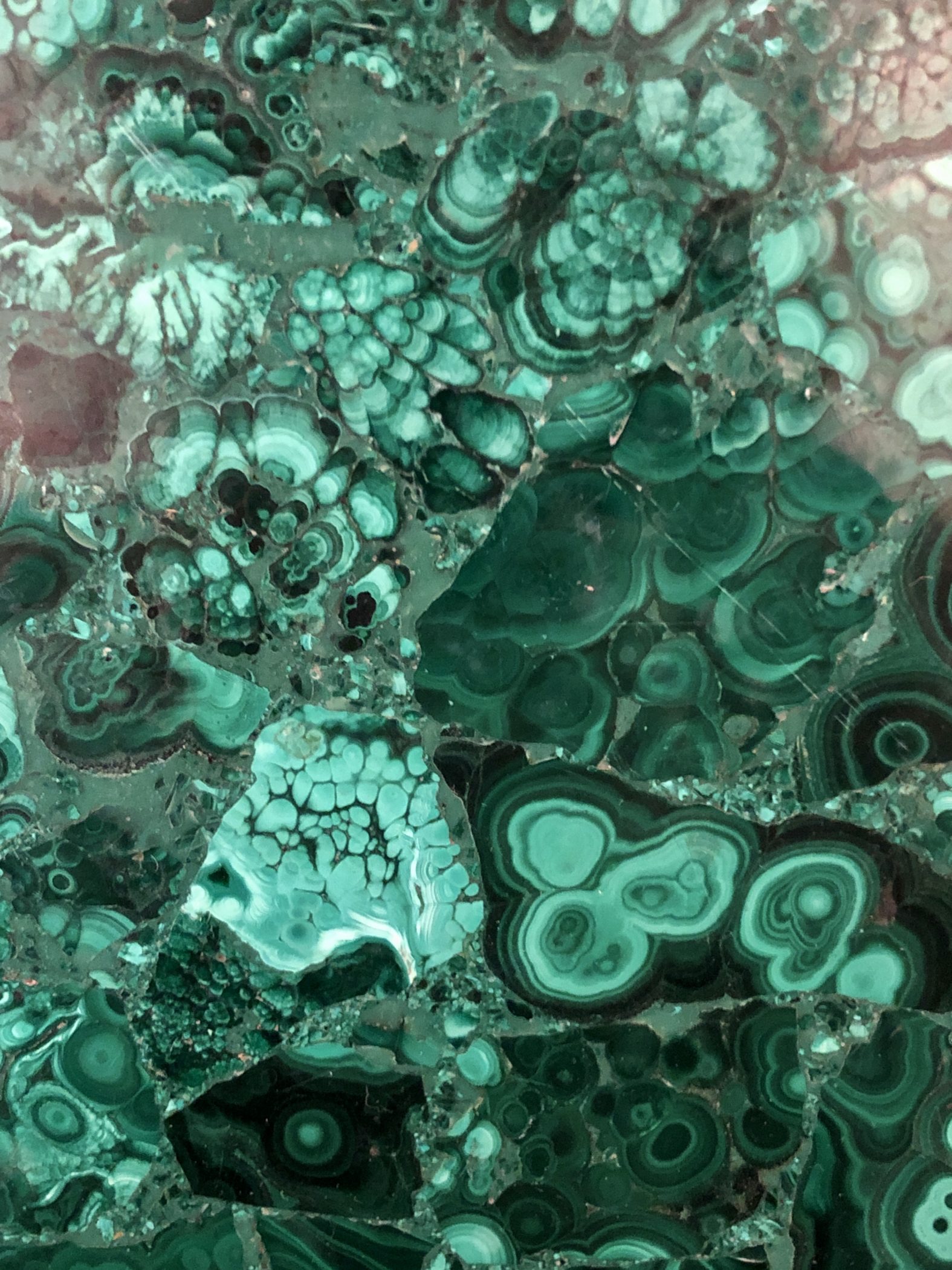
Little by little, the monumental achievements and the rooms of the malachites in the 19th century became synonymous with undeniable prestige. In 1835, the new Saint Isaac’s Cathedral in Saint Petersburg was decorated with nearly 16 tonnes of malachite. In 1826, the Duke of Wellington returned from the funeral of Tsar Alexander I with his arms full with a collection of objects straight from the royal workshops of Ekaterinburg, Peterhof or Kolyvan. Then in 1837, the Winter Palace received its sumptuous malachite room. In Mexico City, at Chapultepec Castle, an identical room is preceded by two monumental doors also in malachite. In Paris in the 1860s, the Hôtel de la Païva received a chimney of this mineral when they were already numerous in Russia at the same time; This is evidenced by that of the Youssoupov Palace in Saint Petersburg.
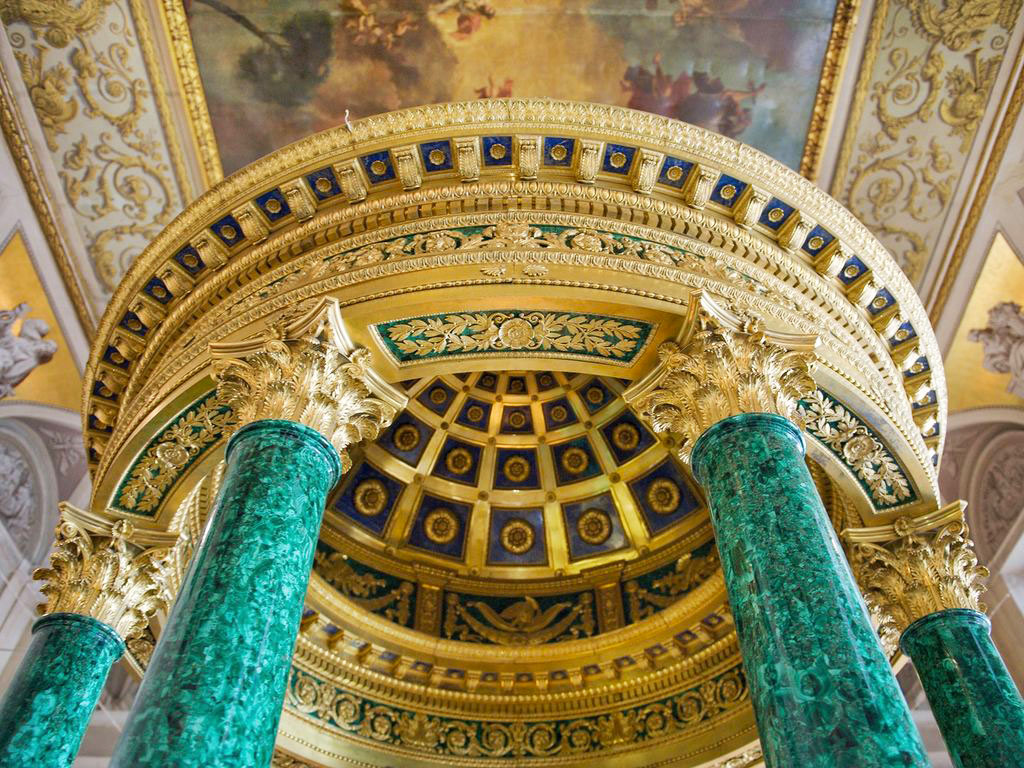
In the 1860s the decline of malachite began, dethroned by lapis lazuli. Monumental productions that were too expensive were abandoned by the royal workshops, which, along with other private workshops, continued to create small objects, candlesticks, snuffboxes, boxes. Today it is very difficult to distinguish the productions of these different workshops which establish the work of malachite as a Russian art craft. In Russia, the green stone made a deep impression. The collection of stories The Malachite Box, written by Pavel Bazhov between 1936 and 1945 became such a classic that a deluxe edition adorned with malachite was exhibited at the World’s Fair in New York in 1939. At the turn of the 20th century and until the 1930s, malachite lost a time its splendor before Art Deco gave it a new lease on life, give it a sober, elegant and refined modernity. Pietro Fornasetti (1913 – 1988) continued this approach by creating contemporary pieces borrowing as much from the gilding of old bronze mounts as from the decorative arts of the 18th and 19th century. Today, malachite no longer covets the monumental, but its moiré greens continue to delicately transform adornments and small objects into refined jewels.
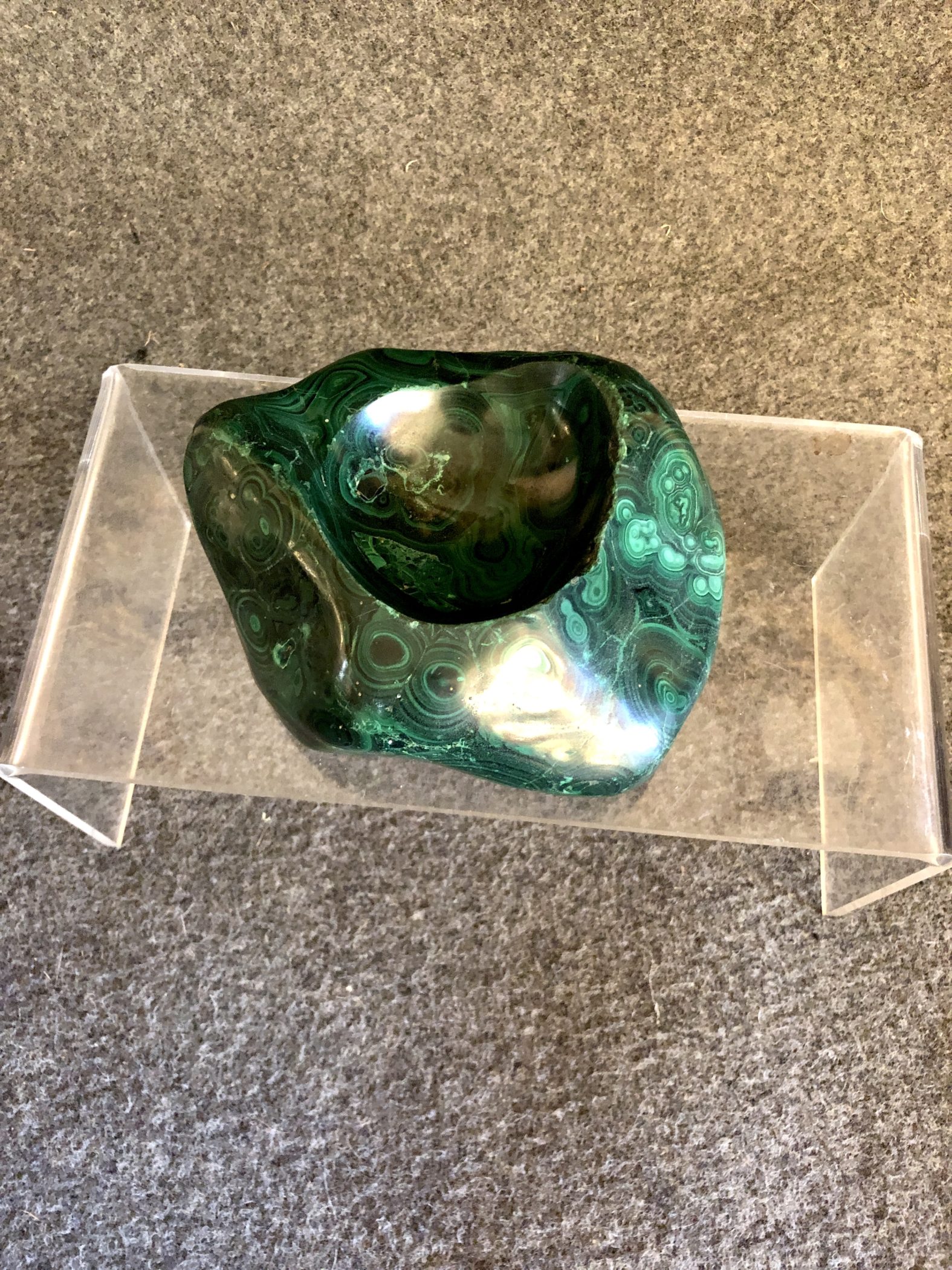
Marielle Brie
Art Historian for Art Market and Cultural Media
Author of the blog Objets d’Art et d’Histoire
Autres ressources et documentations
28 June 2025
Plaster Sculptures, Plaster Casts
For a long time, plaster casts suffered from a poor reputation. Often regarded as crude replicas, and sometimes even dismissed as inexpensive imitations, they nonetheless had…
17 April 2025
The Middle-Ages Furniture
Rare and highly sought-after, Middle-Ages furniture is making a strong comeback. An overview of this market, where enlisting the guidance of a professional is strongly advisable.
18 March 2025
Murano Glass Furniture
Since the beginning of the 20th century, Murano glassmakers have been exploring new horizons. After classic lighting and decorative art, Murano glass is now used to adorn…
16 December 2024
A bronze triton after the sculptures of François Girardon (1628 – 1715) in Versailles
This fountain element is all the more admirable as it is sculpted after the masterpieces of the Pyramid Basin, on the parterre of the North Wing of the Versailles gardens.
18 November 2024
Tyco Bookcase, by Manfredo Massironi, for Nikol International
A pure creation of optical art research in the 1960s, the Tyco library shelf designed by Manfredo Massironi invites the viewer to bring the work of art to life on a daily basis.
3 August 2024
The Ocean Liner Style
In the 20th century, the immense ocean liners connecting the Old Continent and the New World were ambassadors of tastes and innovations on both sides of the Atlantic.



